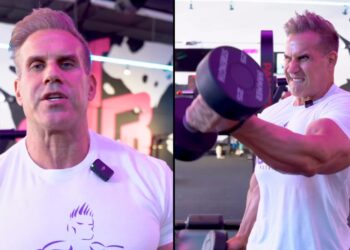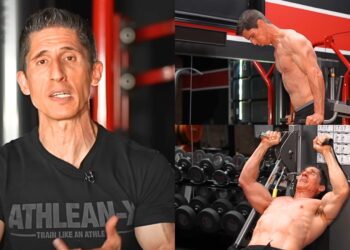Having chest muscles that don’t respond to normal training and resist growth is actually pretty common. The reason for this, however, can be boiled down more to the way you perform your chest exercises in your chest workouts than it can on your genetics, and that’s a good thing.
To illustrate this, literally, I am breaking out the muscle markers to show you why this occurs. When you look at the anatomy of the chest, you quickly realize just how close in proximity and function the front deltoid is to that of the pectoralis muscle. Because of this close relationship, there is a tendency of the deltoids to want to dominate the movements that are supposed to be performed primarily by the chest.
Look no further than the classic bench press exercise. When you lie either in the flat bench or incline bench position, the setup of your shoulders in relation to the chest is key. You have likely heard that you need to keep your shoulder blades pinched together and your shoulders down and back. This doesn’t just apply to the beginning of the movement but throughout the movement. This is critical because doing this provides not just stability to the shoulder joint, but it allows the pecs to be the main drivers of the exercise.
In the following video, pro athlete trainer Jeff Cavaliere explains the most common mistakes made in chest workouts that are limiting the response of your pecs to the exercises you are doing for them.
I demonstrate this with the use of the markers and by drawing out both the front deltoid muscle and the upper pec fibers. When you press up, if you allow your shoulders to protract forward during the press you will see that the deltoid moves into a more prominent or forward position about the pecs. This is a mistake. When placed in this upfront position, they are more equipped to take on the load of the chest exercise that you are performing and the delts will quickly dominate the movement. While this is good for the hypertrophy of the shoulders, it is taking away from the development you are seeking in your chest.
Level Up Your Fitness: Join our 💪 strong community in Fitness Volt Newsletter. Get daily inspiration, expert-backed workouts, nutrition tips, the latest in strength sports, and the support you need to reach your goals. Subscribe for free!
Instead, you must make sure that the first line of defense in any movement is the chest. You can assure you are doing this by keeping those shoulders down and back, but more importantly, lifting your sternum up and sticking your chest out at the same time. If you can always keep your chest more proud of your shoulders, then you will be assuring yourself that the chest is taking on the brunt of the chest exercise while the shoulders are relegated to the more supporting role they should have.
I show you how this applies to not just the bench press and incline bench press exercises but virtually all of the major chest exercises. In the bodyweight equivalent, the pushup, the same thing applies. Most of us tend to push up and allow our chests to sink back as the arms press away from our body, and the shoulders drift in front of the chest. Do it instead the way I’m showing you here, and while you may find that you can do fewer pushups, you will be getting much more out of them in the process.
Same thing goes for dips as well. On this exercise, however, not only are you going to get more activation of the non-responder chest muscles but you are going to be putting your shoulder in a much safer position. Doing dips while allowing your shoulders to round forward is a recipe for shoulder disaster that you want to avoid at all costs.
So before you start blaming your genetics for why you can’t build a bigger chest first look to your form and see if you aren’t doing what you can see in the above video. Fix it quickly and then look to take your results to the next level by applying the same critical evaluation of everything you are doing in the gym.








